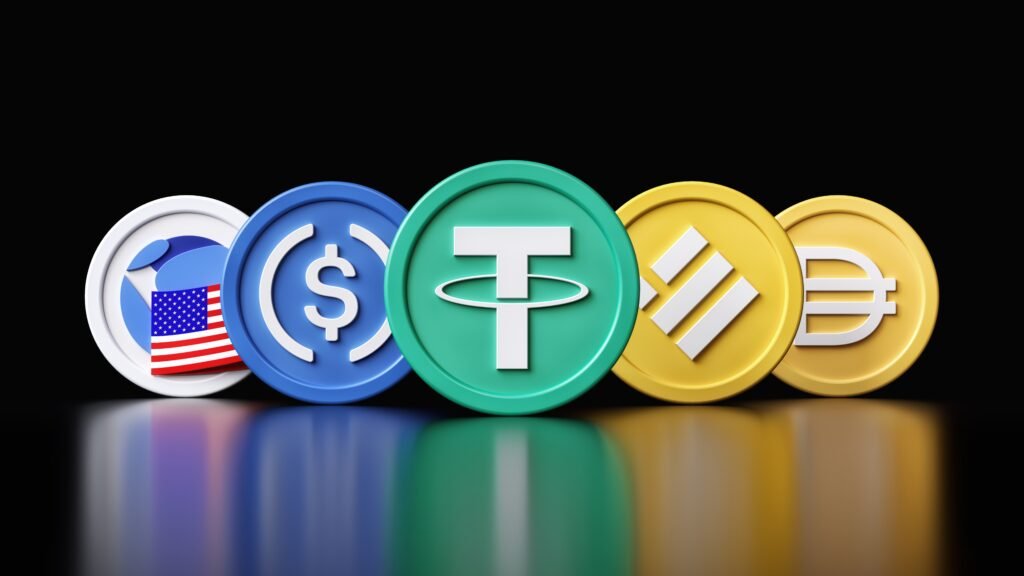Stablecoins have recently become a core part of the crypto landscape. They do what other coins cannot, offering a bridge between the volatility of the “normal” digital assets and the overall stability of a traditional currency.
As they keep growing in popularity, it raises an important question. Can they ever replace traditional money?
While this is not a simple question to answer, to begin finding out the truth, we must dive into the role of stablecoins, their advantages, the challenges they face and their overall potential to become the backbone of mainstream currency alternatives.
Before we begin, let me remind you to check out all the things Crypto Analyst can offer you. You can check out our services and more by clicking here.
What are stablecoins?
Stablecoins are like they sound, they are digital assets designed purely to maintain a stable value. These coins are usually pegged to real-world currencies such as USD or GBP as well as other assets like gold.
Unlike the most popular cryptocurrencies, such as Bitcoin and Ethereum, stablecoins aim to combine the best of both worlds. Giving the holder the effectiveness of cryptocurrency, the stability of blockchain technology all while maintaining a stable price.
There are three main types of stablecoins. These are as follows;
– Fiat Collateralised Stablecoins: These particular stablecoins are backed by the reserves of traditional currencies held in banks. Examples of these would include Tether (USDT) and USD Coin (USDC).
– Crypto Collateralised Stablecoins: These stablecoins are backed by other cryptocurrencies and maintained through the use of smart contracts. An example of this would be the stablecoin DAI.
– Algorithmic Stablecoins: This particular category of stablecoin is not backed by any reserves, but is maintained through supply and demand algorithms. An example of this would be TerraUSD (UST). Although these are probably the least popular kind of stablecoins, mainly due to TerraUSD’s collapse in 2022.
What are the advantages of stablecoins over physical money?
There are a few benefits we should talk about when it comes to stablecoins and why they are a contender to traditional money.
– Faster and Cheaper: I am sure you have at some point in you life been charged a transaction fee by your bank, and more than likely quite a large one if you happen to have made an international payment. These transactions can be expensive and slow due to the lengthy processing times required. Stablecoins operate on the blockchain, allowing the transactions to be almost instant and require very little resources to complete. This being the case means the savings would be passed onto the user.
– No-one Left Behind: Stablecoins have the potential to include millions of people that happen to live in an area with a weak or non-existent banking structure in place. All the user would require would be a smartphone and an internet connection, allowing them to “bypass” the banks completely.
– Transparency and Security: As with all cryptocurrencies, all stablecoins transactions would be recorded on the blockchain. This would reduce fraud and increase transparency between all parties involved in any transactions.

That sounds great, but what challenges do stablecoins face?
As good as the advantages of the stablecoins are, like everything they have certain challenges and issues that they are going to need to overcome. These include;
– Regulation: Governments and regulatory bodies worldwide are still undecided on how to regulate stablecoins. Some people have concerns regarding the ability to launder money, avoid paying tax and most importantly, the chance that stablecoins could undermine the entire banking system.
– Trust Issues: Several stablecoins have come under fire recently for not being totally honest regarding their reserves. Tether (USDT) for example has drawn criticism for not providing full audits of its collateral holdings. This has raised concerns over its ability to hold its price long-term.
– Scalability: While the blockchain does allow for much faster transactions, some networks have already experienced major congestion already. This had led to much higher fees and longer waiting times for the user. If stablecoins were to be used worldwide, they would need to find a fix to avoid this happening.
Crypto Analyst‘s Final Thoughts.
Stablecoins are gaining popularity and offer a major step forward to making all money digital. However, this isn’t going to happen overnight. There are still many questions that need answers and people that need to be convinced that it is the right move and most importantly, that they are safe and secure for the users.
While a total replacement of traditional money with stablecoins is unlikely in the near future, once these issues have been addressed, who knows what could happen.
Everything is resting on how the developers, regulators and the finance industry choose to go forward.
